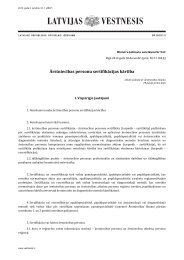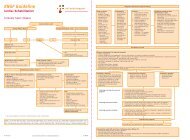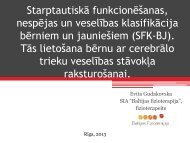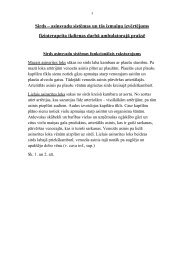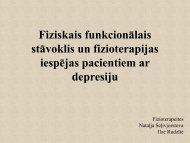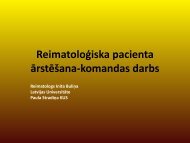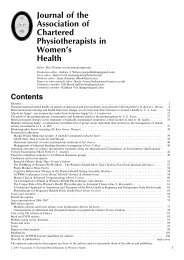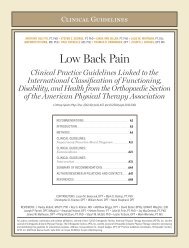KNGF Guideline Cardiac rehabilitation
KNGF Guideline Cardiac rehabilitation
KNGF Guideline Cardiac rehabilitation
Create successful ePaper yourself
Turn your PDF publications into a flip-book with our unique Google optimized e-Paper software.
<strong>KNGF</strong> Clinical Practice <strong>Guideline</strong> for physical therapy in patients undergoing cardiac <strong>rehabilitation</strong><br />
Supplements<br />
Supplement 11 Organization of cardiac <strong>rehabilitation</strong> in the Netherlands<br />
The Netherlands Society of Cardiology (NVVC) has drawn up a list of practice requirements to ensure the safety and quality of Phase II cardiac<br />
<strong>rehabilitation</strong> and as a basis for the new ‘diagnosis and treatment combination’ which is to be developed. [1] As indicated in the 2011<br />
multidisciplinary guideline on cardiac <strong>rehabilitation</strong> (Multidisciplinaire Richtlijn Hartrevalidatie 2011), all forms of cardiac <strong>rehabilitation</strong><br />
must offer a multidisciplinary and complete care program, including at least:<br />
• intake;<br />
• 4 cardiac <strong>rehabilitation</strong> programs:<br />
- information program;<br />
- exercise program;<br />
- relaxation program;<br />
- lifestyle program / behavior modification program;<br />
• psychological programs;<br />
• evaluation and reporting.<br />
Requirements have been established for each of these levels, relating to the care services available, the training of care providers, quality<br />
and safety issues, facilities, and the composition of the multidisciplinary team. Further information is available in the NVVC’s practice<br />
guideline for cardiac <strong>rehabilitation</strong> (Praktijkrichtlijn Hartrevalidatie, in Dutch). 1<br />
Level I cardiac <strong>rehabilitation</strong><br />
This type of cardiac <strong>rehabilitation</strong> is designed for non-complex presenting problems. This involves the care for low-risk patients, as<br />
judged by the patient’s cardiologist. The following criteria can be used to decide whether a patient is at low risk:<br />
• stable medical condition;<br />
• no psychological and / or cognitive disorders;<br />
• no angina and / or documented ischemia at low exertion levels;<br />
• left ventricular ejection fraction ≥ 40%;<br />
• no serious arrhythmias during exertion;<br />
• no significant heart valve disease;<br />
• no congenital heart disease;<br />
• no ICD;<br />
• no serious comorbodity that could impede the <strong>rehabilitation</strong> process (e.g. COPD, diabetes mellitus, locomotor disorders<br />
Level II cardiac <strong>rehabilitation</strong><br />
This type of cardiac <strong>rehabilitation</strong> is designed for complex presenting problems. This involves the care for patients who meet at least<br />
one of the following criteria:<br />
• psychological and / or cognitive disorders;<br />
• chronic stable angina or silent ischemia;<br />
• NYHA Class III;<br />
• heart failure (left ventricular ejection fraction < 40%).<br />
• serious arrhythmias;<br />
• significant heart valve disease;<br />
• congenital cardiac disease;<br />
• having had an ICD implanted;<br />
• having undergone a heart transplant;<br />
• comorbidities that may impede exercise capacity (e.g. COPD, diabetes mellitus, locomotor disorders, intermittent claudication).<br />
V-08/2011<br />
44



